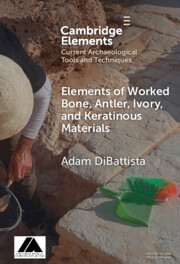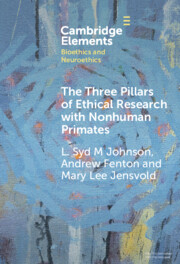Refine search
Actions for selected content:
3 results

Animal Illness and the Literary Imagination
- A Cultural History of Animal Disease Management
-
- Published online:
- 18 November 2025
- Print publication:
- 18 December 2025

Worked Bone, Antler, Ivory, and Keratinous Materials
-
- Published online:
- 16 December 2024
- Print publication:
- 16 January 2025
-
- Element
- Export citation

The Three Pillars of Ethical Research with Nonhuman Primates
- A Work Developed in Collaboration with the National Anti-Vivisection Society
-
- Published online:
- 04 December 2024
- Print publication:
- 02 January 2025
-
- Element
-
- You have access
- Open access
- HTML
- Export citation
